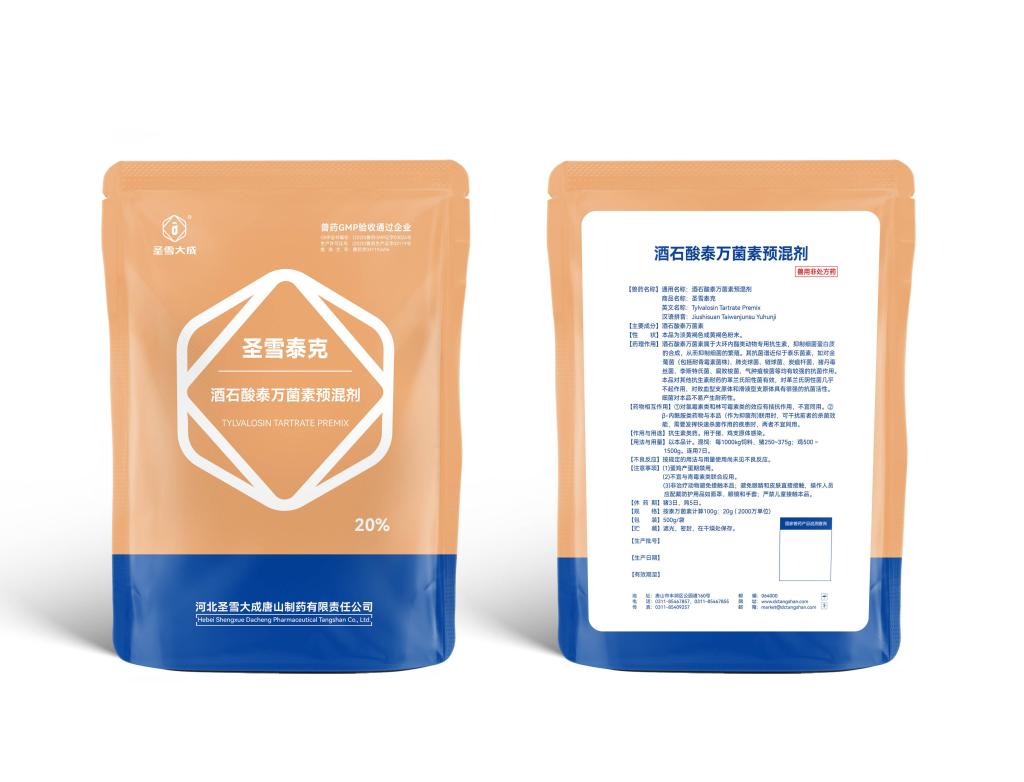Tel:+8618231198596

News
 CONTACT
CONTACT
 CONTACT
CONTACT
- Linkman:Linda Yao
- Tel: +8618231198596
- Email:linda.yao@dcpharma.cn
- Linkman:CHARLES.WANG
- Department:Overseas
- Tel: 0086 0311-85537378 0086 0311-85539701
News
Current Position:
Home >
News
>Tylvalosin tartrate premix formulations are developed to minimize adverse effect.
Tylvalosin tartrate premix formulations are developed to minimize adverse effect.
TIME:2024-09-10
Understanding Tylvalosin Tartrate
Tylvalosin tartrate is a semi-synthetic macrolide antibiotic derived from tylosin. It is effective against a broad spectrum of Gram-positive bacteria and some Gram-negative bacteria, making it a valuable tool in the prevention and treatment of infectious diseases in livestock. When included in animal feed as a premix, it can help control diseases that could otherwise compromise animal health and productivity.
The Importance of Beneficial Gut Flora
The gut microbiome plays a critical role in the health of livestock. Beneficial bacteria aid in the breakdown of complex carbohydrates, synthesize essential vitamins, and contribute to the regulation of the immune system. Disruption of this microbial community can lead to reduced nutrient absorption, impaired immunity, and an increased susceptibility to pathogenic infections. Therefore, any antibiotic used in animal feed must be carefully formulated to target harmful bacteria while leaving beneficial flora intact.
Strategies for Minimizing Adverse Effects
Targeted Delivery Systems: Modern tylvalosin tartrate premix formulations utilize targeted delivery systems that ensure the antibiotic reaches specific areas of the gut where it is needed most. This reduces exposure to beneficial bacteria in other regions of the gastrointestinal tract, limiting the disruption of the overall microbial ecosystem.
Dosage Optimization: Precise dosing is crucial to achieving the therapeutic benefits of tylvalosin tartrate while minimizing adverse effects. Carefully calibrated premix formulations allow veterinarians and farmers to administer the antibiotic at levels that are effective against pathogens but do not unnecessarily impact the beneficial flora.
Combination with Probiotics and Prebiotics: Some premix formulations include probiotics and prebiotics, which are beneficial bacteria and indigestible food components that promote the growth of good bacteria. These additives help to replenish and support the gut microbiota, mitigating the potential negative impacts of antibiotic therapy.
Selective Antimicrobial Action: Researchers are continually working on refining the chemical structure of tylvalosin tartrate to enhance its selectivity towards pathogenic bacteria. This selective action ensures that beneficial bacteria remain largely unaffected, preserving the integrity of the gut microbiome.
Regulatory and Ethical Considerations
The use of antibiotics in animal feed is subject to strict regulatory oversight aimed at ensuring animal welfare and public health. Premix formulations must comply with guidelines set by regulatory bodies such as the FDA and EU authorities concerning the use of antibiotics in livestock. Ethical considerations also play a role, emphasizing the responsible use of antibiotics to prevent the development of antibiotic-resistant strains of bacteria.
Conclusion
The development of tylvalosin tartrate premix formulations that aim to minimize adverse effects on beneficial gut flora represents a significant advancement in livestock management. By protecting the gut microbiome while effectively controlling disease, these formulations support healthier animals and contribute to sustainable agricultural practices. As research continues to evolve, we can expect further improvements in antibiotic use, ensuring that the benefits of these medications are maximized while the risks to the animal's gut health are minimized.
- Tel:+8618231198596
- Whatsapp:18231198596
- Chat With Skype







